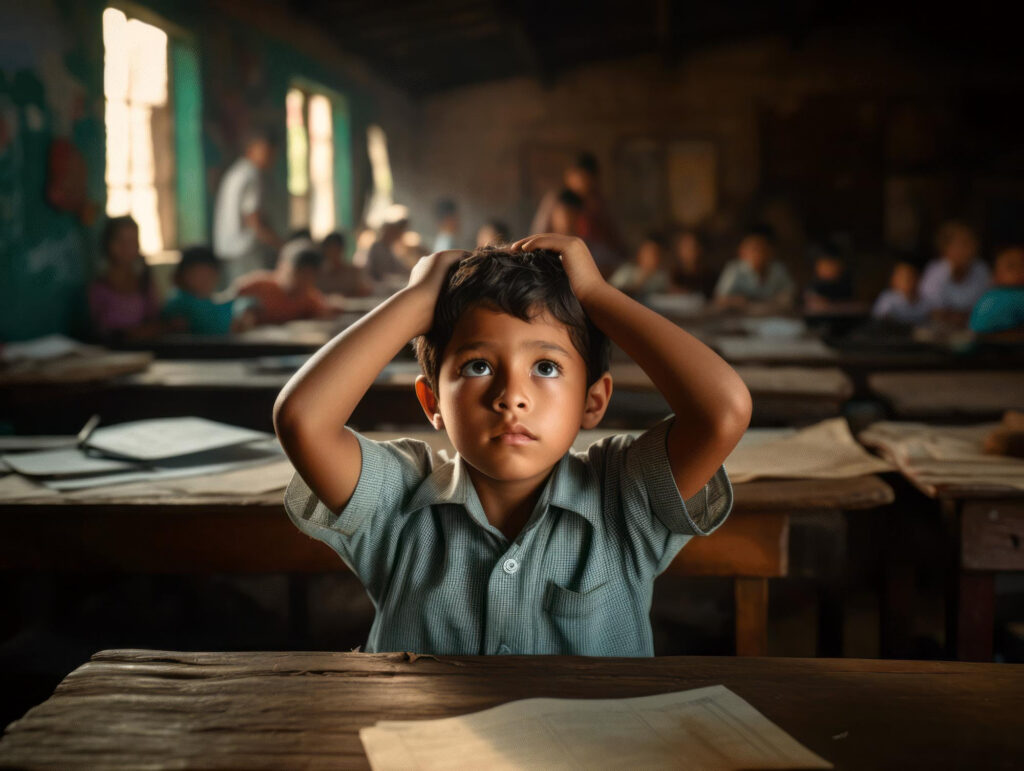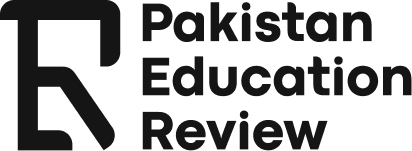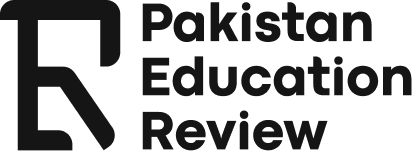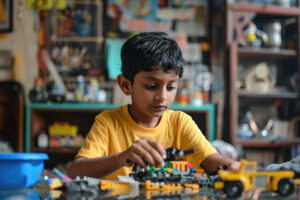There is a paradigm shift in education systems globally, where instead of a rote learning system, an emphasis is placed on creativity, problem-solving, and innovation. STEM—Science, Technology, Engineering, and Mathematics—has become a product of this change, providing students with the skills they require to prosper in the knowledge economy and contribute to research, entrepreneurship, and technological development.

In Pakistan, schools are still primarily focused on rote learning, which is gauged by grades rather than creativity. Pakistan needs to incorporate STEM education in schools to equip future generations with the skills and knowledge necessary for the challenges of the future. This can be accomplished through curriculum restructuring, teacher training, and practical learning experiences that motivate students to think critically, engage with real-life situations, and develop creativity, knowledge, and expertise. Current large-scale assessments and analyses of Pakistan’s learning outcomes ghlight persistent learning challenges that underline the need for a shift in pedagogy.
Pakistan's Current Education Problems
Education at any stage in Pakistan focuses on rote learning and examination results instead of encouraging critical thinking and solving problems. Science is taught as theoretical knowledge without much experimentation, math as a series of formulas to regurgitate, and technology or engineering are hardly ever mentioned at the lower levels. Most of the schools do not have the best labs or digital tools, particularly in rural areas. This style contradicts international trends in which children nowadays study robotics, coding, and creative problem-solving at a young age. To participate in the knowledge economy, Pakistan needs to move beyond rote learning and embrace innovation, with STEM education at its core. ASER Pakistan and other sector reports document gaps in learning, resources, and pedagogical practices across Pakistan.

Why STEM Is Critical to the Future of Pakistan
STEM is more than a collection of subjects; it is a mindset that allows students to explore and experiment with concepts while solving problems. For Pakistan, the rewards of focusing on STEM education are enormous.
At the national scale, STEM will be able to contribute to urgent issues. Greater emphasis on science and technology will enable students to become professionals capable of developing renewable energy solutions, improving water distribution systems, and creating affordable healthcare technologies. Precision farming and sustainable irrigation technologies are examples of STEM-driven innovations that Pakistan’s agriculture—one of the pillars of its economy—can harness.
Economically, STEM education fosters entrepreneurship and enhances participation in the global knowledge economy. Countries that have invested in STEM have developed start-ups, technologies, and industries that generate jobs and investment. With one of the largest youth populations in the world, Pakistan has enormous innovation potential—provided it equips young people with the necessary skills and opportunities. UNESCO and other international development organizations emphasize STEM’s crucial role in sustainable development and in fostering 21st-century skills.
Individually, STEM helps students develop essential problem-solving skills, adaptability, and teamwork abilities that apply not only to science-related fields but across all professions. Whether a student studies business, healthcare, or the arts, the problem-solving approach fostered by STEM can be invaluable for success.
Challenges to Implementing STEM Education in Schools
Although STEM education holds great promise, its implementation in schools presents several challenges. The curriculum remains focused on memorization, with science taught as a list of facts to memorize and math presented as formulas to copy rather than problems to solve. Trained according to traditional systems, teachers are often unfamiliar with inquiry-based teaching methodologies and need better preparation to teach STEM effectively. There is a further inhibition of hands-on learning through limited access to labs, digital tools, and other resources, particularly in rural schools. There is also the issue of cultural assumptions, whereby, in most cases, many students do not reach their potential, especially when those assumptions are unreasonable, as they hinder their desire to learn science and technology. Inclusion and creativity in STEM can unlock the abundant potential of the Pakistani youth. Research on curriculum and assessment in Pakistan highlights the negative washback of high-stakes exams and how they encourage memorization over higher-order thinking.
Reforms and Recommendations to Implement STEM
Although these challenges are complex, there are clear and feasible measures that Pakistan can adopt to integrate STEM into its school system:
A. Reforms in Curriculum
The curriculum should integrate STEM at the elementary level. Science should be treated as an experiential and discovery-based subject, whereas math must be connected to everyday problem-solving. The introduction of coding and robotics should begin at the elementary or middle school level in a playful manner that is not too cumbersome and sparks curiosity. Assessments should evaluate creativity, collaboration, and problem-solving rather than relying on traditional rote-based tests.
B. Training of the Teacher
The focal point of this change is teachers. The current professional development programs should focus on providing teachers with new skills such as project-based learning and inquiry-based teaching. Teachers can be trained to encourage students to question concepts, form hypotheses, and work toward solutions. Teachers who manage to implement innovative practices in their classrooms are entitled to receive incentives. Collaboration or exchange programs with international educators can be used to enhance teaching.

C. Practical Experiences of Learning
STEM is at its best when students are allowed to construct, experiment, and test their ideas. Laboratories can be developed in schools as places of innovation and makerspaces. Attending science fairs, coding contests, and robotics clubs can give students avenues to express their creativity. Even small community projects, such as building water filters or producing solar-powered lamps, help instill in students the confidence to apply their knowledge to real-world problems.
D. Technology Integration
Digital technology can bring STEM learning to life. Rather than being boring, complex concepts can become more interesting through classes that use tablets, interactive boards, and online learning platforms. Online materials, including libraries and STEM learning applications, can augment traditional teaching. Resource gaps can be reduced through hybrid learning models, in which rural schools are equipped with digital content and combine their use with in-person teaching to improve access to STEM education. Partnerships with educational technology companies can also provide affordable, context-appropriate solutions for Pakistan.
E. Gender Equality and Inclusivity
Girls must be encouraged to participate in STEM. Schools should establish mentorship programs in which female scientists and engineers mentor girls. Stereotypes can be broken through scholarships and awareness campaigns that inspire parents to support their daughters and allow them to pursue a STEM career. Schools can create safe and supportive environments in which all children, regardless of gender, have the opportunity to explore science and technology.
Learning from Global Examples
Many countries around the world have designated STEM education as a national priority. In Finland, the curriculum explicitly incorporates cross-curricular, phenomenon-based, project-oriented approaches that encourage learners to engage with real-world problems and investigations—a widely documented feature of the Finnish core curriculum reforms.
In Singapore, the Ministry of Education has established school-level programs that connect academic learning with real-world challenges through Applied Learning Programs and school-based STEM initiatives. Institutions such as the Science Centre Singapore run STEM outreach and applied-learning projects for schools.
In India, the National Education Policy (NEP 2020) explicitly encourages experiential learning and introduces coding/basic computational thinking into school curricula. In addition, national initiatives like Atal Innovation Mission’s Atal Tinkering Labs (ATLs) provide hundreds of maker-spaces and labs where students learn hands-on robotics, coding, and design thinking.
These illustrations confirm that STEM at the school level can be and should be integrated. The strategies most relevant to the Pakistani context include project-based learning, digital accessibility, and practical teacher training.
A Way Forward
A coordinated effort at all levels is needed to build a STEM culture within schools. Policymakers must ensure that STEM remains a priority in education policy, with dedicated budgets for laboratories, teacher training, and the integration of technology. In schools, an atmosphere that celebrates innovation can be fostered through competitions, projects, and extracurricular activities. Families are also a critical part of this equation, as they must cultivate curiosity at home—whether through science kits, educational games, or simply by supporting children when they ask questions and conduct experiments.

The vision should focus not only on producing more scientists and engineers but also on nurturing a generation of independent thinkers, problem-solvers, and innovators who can contribute to all sectors of society.
Final Thoughts
The future of Pakistan lies in how successfully it raises its youth to meet the challenges and opportunities of the 21st century. This cannot be accomplished by rote memorization. Incorporation of STEM into educational institutions will help the nation develop a culture of innovation, creativity, and critical thinking. By implementing changes to the curriculum, professional development of educators, practical learning, information technologies, and inclusion, Pakistan can design classrooms where students will learn to explore instead of merely repeating what others say.
The child who experiments in a school science lab today could grow up to become the genius who resolves the energy crisis of the future or invents life-saving medical technology. Through the adoption of tech-based STEM, Pakistan is helping its education system build a brighter future and positioning itself for entry into the globalized knowledge economy. The way ahead is clear: STEM should be at the core of the educational system for the new generation in Pakistan; it must begin by replacing rote learning and end with innovation.
Disclaimer: Any opinions expressed in this article do not necessarily reflect the opinions of the Pakistan Education Review. This content is meant for informational purposes only.
About the Author:
My name is Kashaf Kamal, and I am currently pursuing an MS in English at COMSATS University Islamabad.





